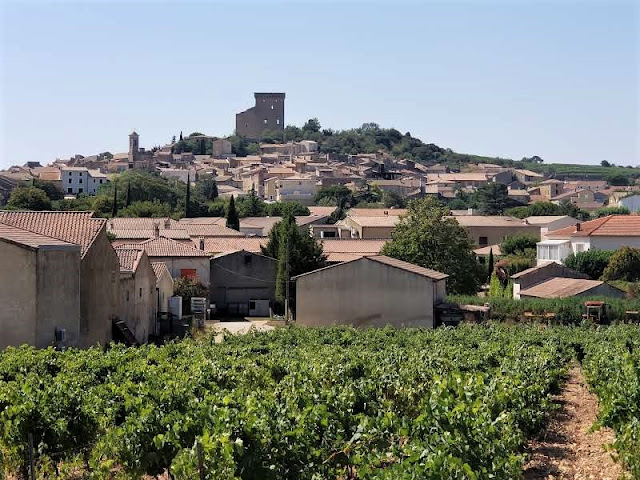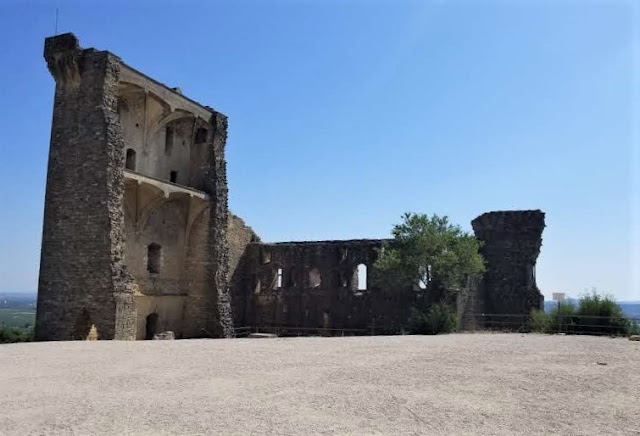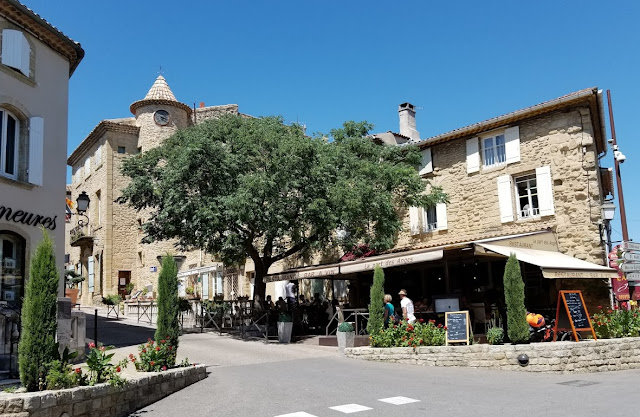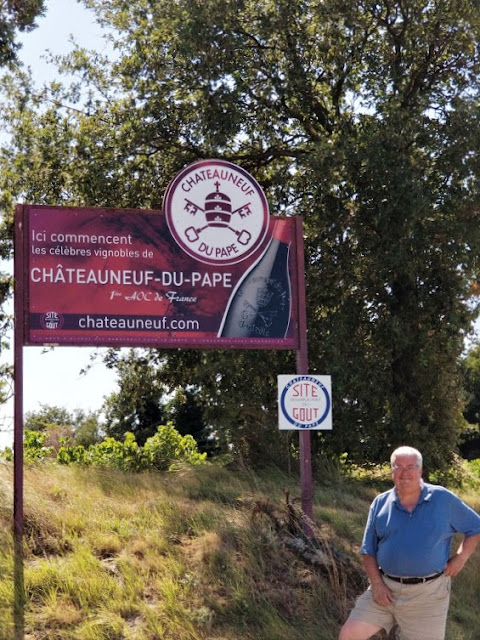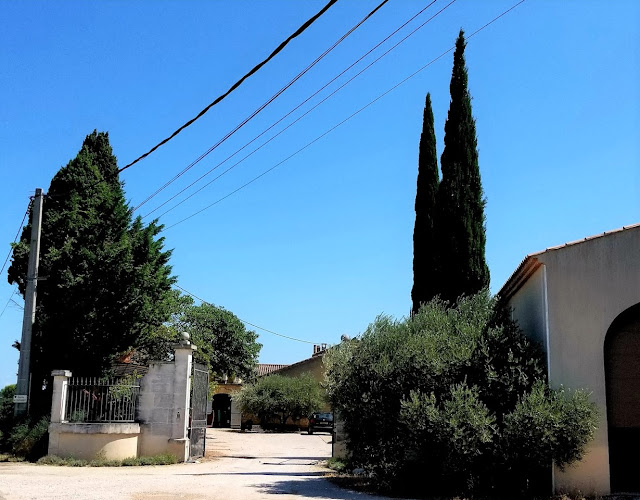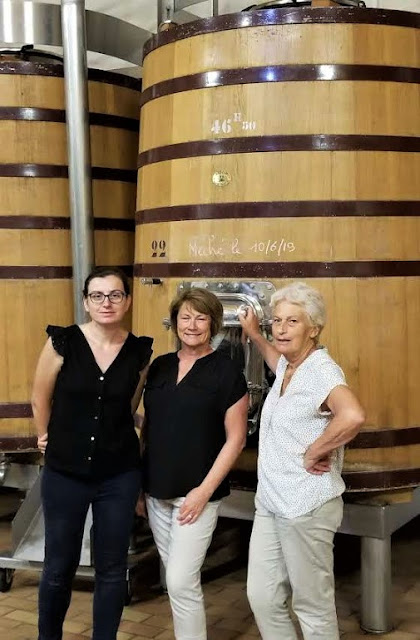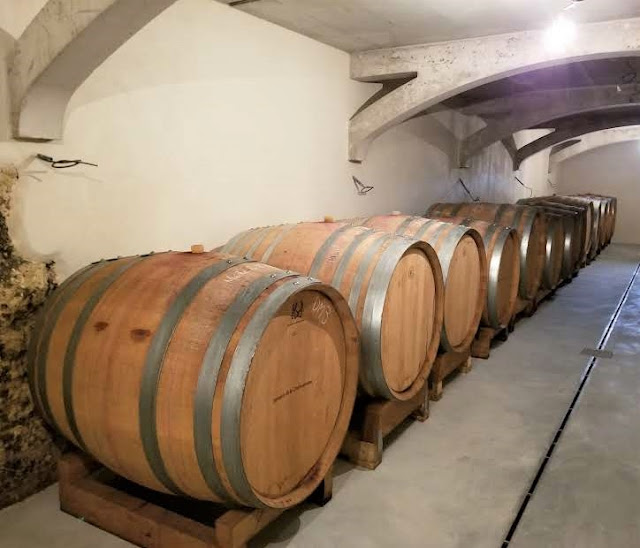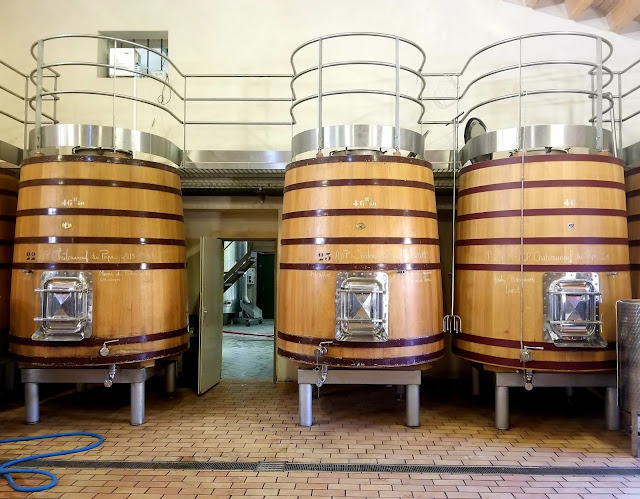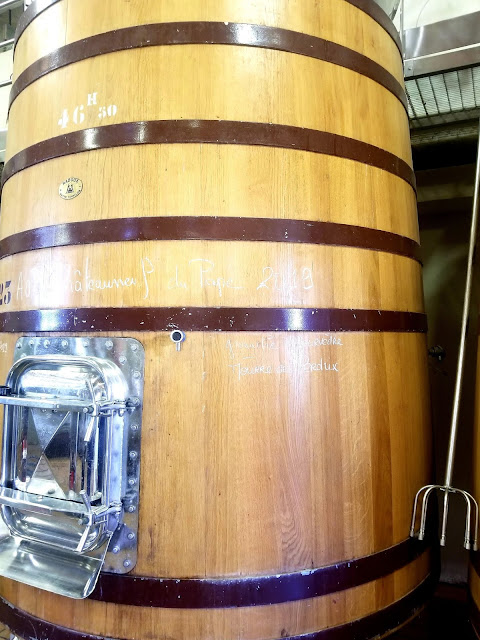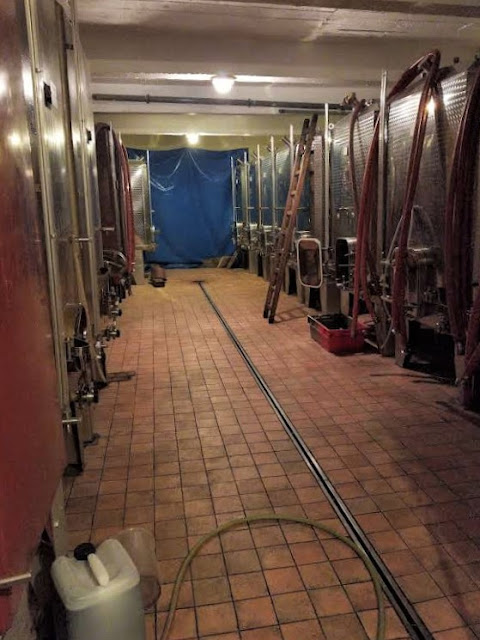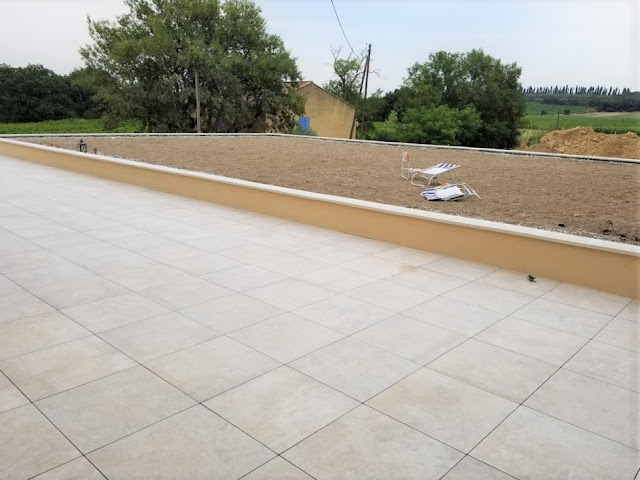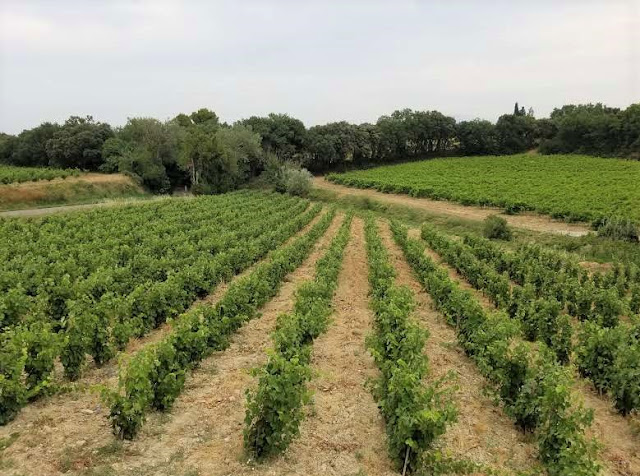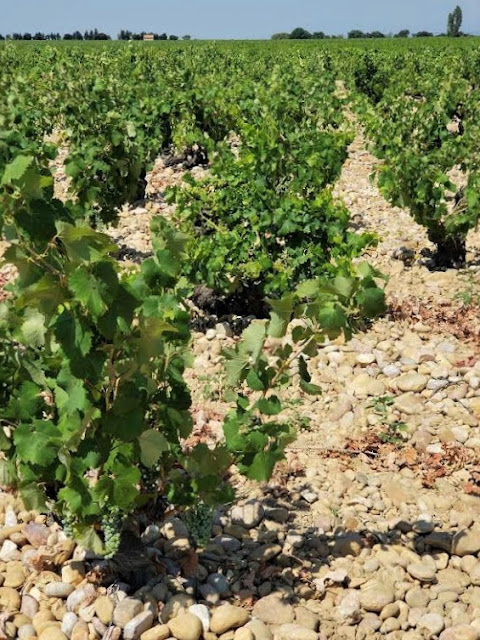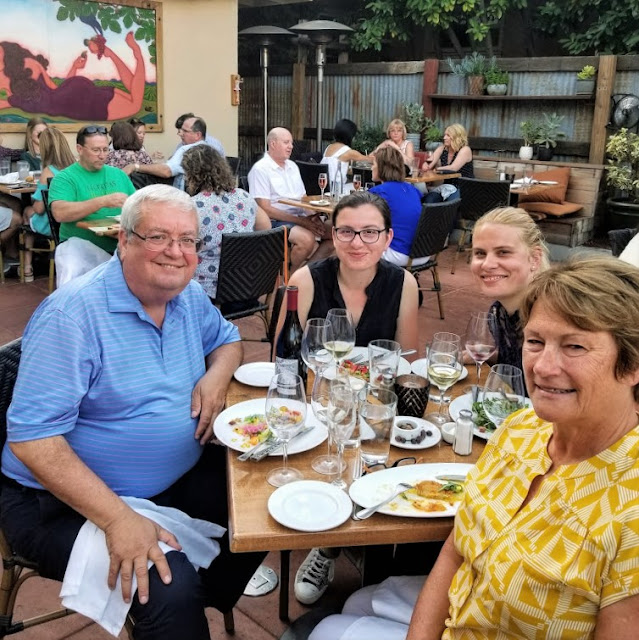As readers know, we ended up buying a house in the middle of Sablet, a small village (pop. 1,264 by last count) that sits on a hill at the foot of the Dentelles de Montmirail (small chain of mountains in photograph below).
Main Sablet industries are wine making and tourism so there is always life in the village in comparison to other villages where tourism is the primary business so there is little activity or life in the off-season.
Within a short walk from the house, there is: "Chez Mimi et Alain" (a well-stocked mini mart), "Chez Thierry" (a butcher shop), florist, pharmacy, tabac/presse, two hair salons, bibliothèque (library), medical offices, a bank with ATM, and post office. At "Maison des Vins et du Tourism", they offer complimentary tastings of Sablet wines and information about the area.
There is also the Café des Sports, Bistrot des Copains and La Come di Pizzeria and two boulangeries, one so close, "Le Pain Médiéval", we can sometimes smell the aroma of freshly baked bread on our terrace in the morning and the second, "Boulangerie Patisserie Pradier" is in the center of the village.
| Sablet sits at the foot of the Dentelles de Montmirail |
We knew that buying pain (bread) would become an essential part of our daily lives with a home in France. You can’t walk down the street in France without spotting at least one person with a freshly baked baguette stuck under their arm. Everyone has probably seen a picture of a stereotypical Frenchman, wearing a beret and striped shirt and carrying a baguette under his arm.
One evidence of the importance of boulangeries to the French, is the amount of data that is collected by the French government. The New York Times recently reported that according to a 2017 government report, half of the French population lives within 2.2 kilometers of a bakery as the crow flies. In cities, 73 percent of the population lives within 2,000 feet.
According to the French National Bakery and Confectionary Association, there are 35,000 boulangeries in France, one for every 1800 people in France. The New York Times reports that the average trip to a bakery takes 7.4 minutes on foot, by car, or with another mode of transportation. Specifically, it's 5 minutes in the city and 9.4 minutes in the countryside.
I should mention that according to the French government, only bakers who use proper flour and knead their own dough can call themselves boulangers (bakers) and to be called a boulangerie, a French bakery must bake bread on the premises. Outlets that sell bread baked elsewhere are called a "depot de pain".
French bread comes in a variety of shapes and sizes. The following are a few of the more common types:
The baguette Ordinaire is made with quick-rising yeast and white flour and cost less than one euro.
The baguette Traditionnelle must be made according to the "Décret Pain de 1993". According to this decree, this baguette must be made with just flour, yeast, salt, and water. It’s usually hand-formed, as evident by the pointy ends and bumps in the loaves. This baguette usually costs a few cents more than a baguette ordinaire.
The Pain de Campagne is a thick-crusted loaf made with both wheat and white flour, usually oval in shape.
Pain Complet is a whole-grain loaf
Pain aux Céréales is a small rustic loaf with seeds and whole grains
 |
| Shirley entering our house in Sablet |
Pain Médiéval is our favorite Sablet bakery and thankfully, it's conveniently located just a few steps from our front door behind big trees between the fountain at Place Yvan Audouard and "Chez Mimi et Alain" mini mart.
The Pain Médiéval Boulangerie is open every day of the week except on Monday and Tuesday. The two boulangeries trade days off, Boulangerie Patisserie Pradier is closed on Wednesday and Thursday, and they coordinate their vacations so one of the boulangeries is always open in Sablet.
 |
| Pain Médiéval Boulangerie in Sablet |
Pain Médiéval is owned by Jeannine Moulin and her son, Julien who does the baking. When the bakery is open, there is often a line out the door and cars double-parked in front with motors running while the owner dashes into the bakery to get a freshly baked baguette or some other baked treat.
Each time another person joins the line of people waiting to buy bread, the newcomer greets those already in line with "bonjour madame, bonjour monsieur" and will be responded to in a similar fashion. When it's your turn, Madame Moulin will ask what cuisson (baking), you prefer, "bien cuite" (well cooked and crusty) or "pas trop cuite" (less well baked and softer crust)?
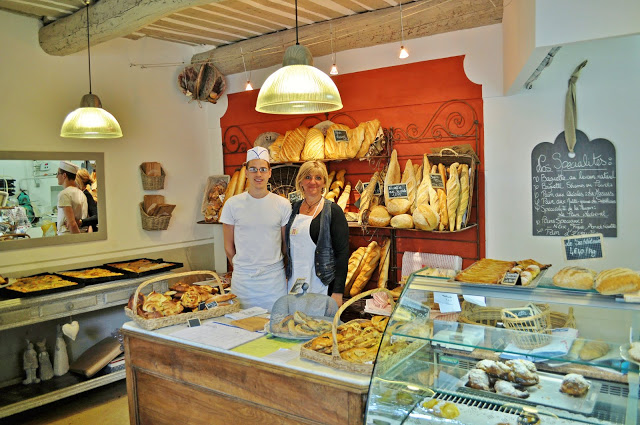 |
| Interior of Pain Médiéval Boulangerie in Sablet |
In addition to buying our daily bread, I usually can not leave Pain Médiéval Boulangerie without one of the pastry's below for our "petit déjeuner" (breakfast) which we eat out on the terrace, weather permitting which is almost every day.
Croissants, flaky, layered, crescent-shaped piece of heaven.
Pain au Chocolat, sometimes called a chocolate croissant, is a sweet roll consisting of a rectangular-shaped piece of yeast-leavened laminated dough, similar in texture to a puff pastry, with one or two pieces of chocolate in the center.
Palmiers are a crunchy, buttery, sweet “cookie” made from puff pastry and sugar. These are my favorite and Madame Moulin, knows that, so she puts them on the list for Julien to bake when we are in town.
On the weekends, Pain Medieval Boulangerie has Chouquettes, bite-sized puff pastries topped with large sugar crystals which my grandchildren love and I love. To me, they are the French equivalent of donut holes.
From time to time when we have guests in Sablet, we ask Madame Moulin to bake us one of the large brioche aux raisins in the photograph below. They are delicious, but too much for Shirley and I to eat before becoming stale, so we save these to enjoy with guests.
 |
| One of Madame Moulin's made to order Brioche |
French boulangeries such as Pain Médiéval Boulangerie offer up many different varieties of breads and other baked goodies, so be aware, the items I have listed is nowhere near exhaustive.
 |
| Julien et sa maman Jeannine of Pain Médiéval Boulangerie in Sablet |
I would be remiss to not share a couple more observations about eating and buying bread in France. These include:
Except in upscale restaurants where you will get a bread plate and butter, French people set bread directly on the table, never on their plate. In France, bread is meant to accompany a meal and sop up sauce, it’s not a separate course, so butter isn’t usually served with bread in France.
Most Americans are germaphobes and you will notice that in boulangeries in France, the vendeuse (the person who sells you the bread) never handles bread with anything but their bare hands. If you are going to enjoy your visit to France, you can't get weird about other people handling the bread you are going to eat.
Good bread is a necessity for any meal in France. Grab it, and tear it apart, and enjoy the aroma, when it opens. Bon Appetit.
Pain Médiéval Boulangerie
6 Place Verdun
84110 Sablet
France
Tel: 04 90 46 91 54
If you are thinking about a trip to the South of France including spending time in Provence, we invite you to visit our website. Our house is available for rent by the week or more. You can reach us for further information by sending an email to chcmichel@aol.com.






































